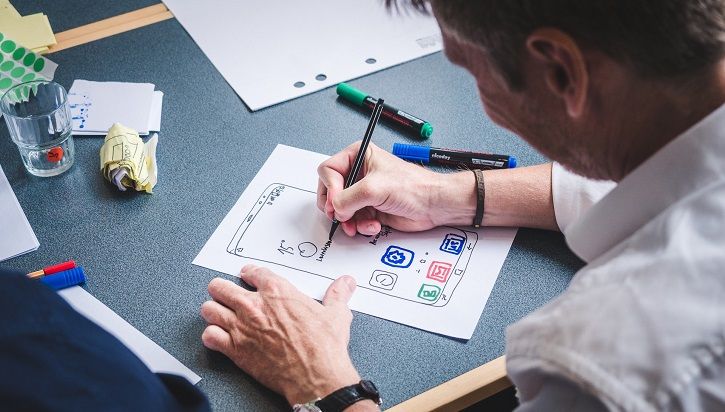Are you exploring a career in logo design? If so, you’re at the right place!
Recent developments in design software and trends have created a surge in the demand for logo designers; all brands compete for the best brand identity.
If you have an eye for aesthetics and visualizing words and products, the field of logo design promises countless opportunities.
Nowadays, companies require a logo not just for their storefronts or products but for building an online presence; they seek the expertise of experienced professionals for the job.
If you’re planning on entering the field, knowing the responsibilities of such a job helps build the required skillset.
Therefore, this article lists some of the responsibilities of custom logo designers:
1. Client Consultation:
A consultation marks the beginning of any logo design project.
Before starting, custom logo designers must meet clients to develop a clear understanding of project expectations and clarity on tasks.
During this discussion, clients describe their vision and the company values they want to emphasize in the design; it helps build clarity about the process and contract for both involved parties.
If a client is uncertain about the project, consultations are the time to clarify details, ensuring expectations and deadlines are understood.
2. Research and Analysis:
While a good sense of design is necessary for the job, it isn’t the only skill needed.
Research and Analysis marks the official start of a logo design process as the designer launches into an extensive search.
The nature of research depends on the client company; however, the primary objectives are to find the organization’s background, position in the industry, competitor companies, and other relevant details.
Analyzing this data is necessary as it forms an informed view and understanding of the client company, which helps create a fitting and effective logo design.
3. Concept Development:
The perfect logo design doesn’t reach the designer in epiphanies; it takes a long process of ideation.
Concept development can be lengthy or quick; it is a stage of brainstorming and experimenting with ideas to help narrow down to a compelling design.
Research from the previous step proves helpful during ideation as it provides cues and directions toward design possibilities.
As concept development solely depends on one’s creativity, logo designers must be patient and give time to consider and build on all ideas.
4. Digital Design:
In a digital age, telling someone your logo designs are sketches on pages comes off as an unserious statement; nowadays, all such projects are online.
Technology has helped produce efficient design software such as Adobe Illustrator, Photoshop, Figma, etc. With such software, custom logo designers easily develop flawless copies of their work in no time.
Therefore, excelling as a logo designer requires a person to be tech-savvy; you must be willing to learn the handling of the latest design software.
5. Typography:
Each element in a logo helps reinforce a message; one of these features is typography.
Lettering and font choices in logo design can completely change the tone and feel of brand identity; it can make a top-notch business appear professional or entirely unserious.
Therefore, custom logo designers are extremely careful while deciding on typography; they explore several fonts and catalogs before finalizing one option.
As a logo designer, you’re required to have an initial understanding of different fonts and typefaces; the knowledge helps avoid confusion during this stage.
6. Color Selection:
Color schemes are important to logo design due to their part in representing tone and feel.
All colors are associated with specific emotions; not only do they add beauty, but meaning to logo design.
While designing, designers need to ensure the color scheme fits the client’s vision, works well with the logo design, and effectively communicates a message.
Most importantly, the color palette must look good; color choices affect the viewer’s attention to the design.
Ideally, amateur designers must familiarize themselves with color theory and its applications.
7. Feedback and Revisions:
Logo designing never follows a straight path; the journey branches into multiple roads before narrowing down to one design.
These branches in the journey occur due to client revision and feedback.
Client satisfaction is necessary for creating a fulfilling logo design; each time there is a development, the designer must get the work reviewed by the client.
Feedback can either result in approval, rejection, or suggestions to improve. In the case of the last two, designers need to revise the design to align better with the client’s expectations.
As a designer, you need to be patient in this process and prepared for all circumstances; remember, the logo must look good to the client and the target audience.
To Conclude
The listed pointers only refer to the basic requirements of logo designers.
By building skills in these categories, you get a good head start at becoming an expert logo designer!



